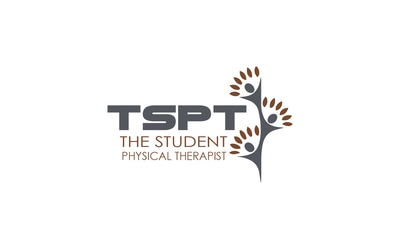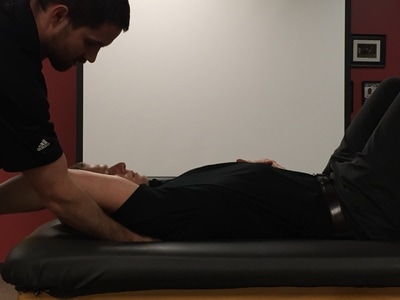- Home
- About Us
- TSPT Academy
- Online Courses
-
Resources
- Newsletter
- Business Minded Sports Physio Podcast
- Day in the Life of a Sports PT
- Residency Corner
-
Special Tests
>
-
Cervical Spine
>
- Alar Ligament Test
- Bakody's Sign
- Cervical Distraction Test
- Cervical Rotation Lateral Flexion Test
- Craniocervical Flexion Test (CCFT)
- Deep Neck Flexor Endurance Test
- Posterior-Anterior Segmental Mobility
- Segmental Mobility
- Sharp-Purser Test
- Spurling's Maneuver
- Transverse Ligament Test
- ULNT - Median
- ULNT - Radial
- ULNT - Ulnar
- Vertebral Artery Test
- Thoracic Spine >
-
Lumbar Spine/Sacroiliac Joint
>
- Active Sit-Up Test
- Alternate Gillet Test
- Crossed Straight Leg Raise Test
- Extensor Endurance Test
- FABER Test
- Fortin's Sign
- Gaenslen Test
- Gillet Test
- Gower's Sign
- Lumbar Quadrant Test
- POSH Test
- Posteroanterior Mobility
- Prone Knee Bend Test
- Prone Instability Test
- Resisted Abduction Test
- Sacral Clearing Test
- Seated Forward Flexion Test
- SIJ Compression/Distraction Test
- Slump Test
- Sphinx Test
- Spine Rotators & Multifidus Test
- Squish Test
- Standing Forward Flexion Test
- Straight Leg Raise Test
- Supine to Long Sit Test
-
Shoulder
>
- Active Compression Test
- Anterior Apprehension
- Biceps Load Test II
- Drop Arm Sign
- External Rotation Lag Sign
- Hawkins-Kennedy Impingement Sign
- Horizontal Adduction Test
- Internal Rotation Lag Sign
- Jobe Test
- Ludington's Test
- Neer Test
- Painful Arc Sign
- Pronated Load Test
- Resisted Supination External Rotation Test
- Speed's Test
- Posterior Apprehension
- Sulcus Sign
- Thoracic Outlet Tests >
- Yergason's Test
- Elbow >
- Wrist/Hand >
- Hip >
- Knee >
- Foot/Ankle >
-
Cervical Spine
>
- I want Financial Freedom
- I want Professional Growth
- I want Clinical Mastery
Valgus Stress Test
Purpose: To determine the presence of a medial collateral ligament tear of the elbow.
Test Position: Seated
Performing the Test: The affected elbow is placed in 20 degrees of flexion with the humerus in full lateral rotation and a neutral forearm (to decreased influence of PLRI) while palpating the medial joint line. The therapist then applies a valgus force to the elbow. If the patient experiences pain or excessive gapping compared to the contralateral side the test is considered positive.
Diagnostic Accuracy: Unknown.
Importance of Test: The MCL of the elbow is a common injury among overhead throwers. According to Neumann, the MCL of the elbow has 3 fiber bundles: anterior, posterior, and transverse. The anterior fibers attach at the anterior part of the medial epicondyle of the humerus and the medial part of the coronoid process of the ulna. The posterior fibers attach on the posterior part of the medial epicondyle and the medial margin of the olecranon process. The transverse fibers attach to the coronoid process of the ulna and the olecranon. Between full extension and 30 degrees of flexion, the bony block of the humero-ulnar joint is responible for resisting valgus forces. Beyond 20 degrees of flexion, however, the anterior fibers of the medial collateral ligament are the primary restraint against valgus forces. Due to the nature of an overhead throw the forces that are transmitted through the medial elbow joint are often so high that a tear occurs. When the elbow is in less than 20 degrees of flexion, the medial collatearl ligament is no longer the primary restraint against valgus forces. Placing the patient in 20 degrees of elbow flexion allows of the anterior band of the MCL to be stressed. The MCL is subject to injury typically when the fully extended elbow is forced into excessive valgus, which can occur from falling onto any outstretched arm or hand. Additionally, the ligament can be related to a fracture in the humeroradial joint. Note that a severe valgus producing force may potentially injure the ulnar nerve or some of the pronator musculature. Baseball and volleyball players often place the MCL in a repetitive valgus-producting force and is often injured in these athletes.
Note: these tests should only be used by properly trained health care practitioners
Test Position: Seated
Performing the Test: The affected elbow is placed in 20 degrees of flexion with the humerus in full lateral rotation and a neutral forearm (to decreased influence of PLRI) while palpating the medial joint line. The therapist then applies a valgus force to the elbow. If the patient experiences pain or excessive gapping compared to the contralateral side the test is considered positive.
Diagnostic Accuracy: Unknown.
Importance of Test: The MCL of the elbow is a common injury among overhead throwers. According to Neumann, the MCL of the elbow has 3 fiber bundles: anterior, posterior, and transverse. The anterior fibers attach at the anterior part of the medial epicondyle of the humerus and the medial part of the coronoid process of the ulna. The posterior fibers attach on the posterior part of the medial epicondyle and the medial margin of the olecranon process. The transverse fibers attach to the coronoid process of the ulna and the olecranon. Between full extension and 30 degrees of flexion, the bony block of the humero-ulnar joint is responible for resisting valgus forces. Beyond 20 degrees of flexion, however, the anterior fibers of the medial collateral ligament are the primary restraint against valgus forces. Due to the nature of an overhead throw the forces that are transmitted through the medial elbow joint are often so high that a tear occurs. When the elbow is in less than 20 degrees of flexion, the medial collatearl ligament is no longer the primary restraint against valgus forces. Placing the patient in 20 degrees of elbow flexion allows of the anterior band of the MCL to be stressed. The MCL is subject to injury typically when the fully extended elbow is forced into excessive valgus, which can occur from falling onto any outstretched arm or hand. Additionally, the ligament can be related to a fracture in the humeroradial joint. Note that a severe valgus producing force may potentially injure the ulnar nerve or some of the pronator musculature. Baseball and volleyball players often place the MCL in a repetitive valgus-producting force and is often injured in these athletes.
Note: these tests should only be used by properly trained health care practitioners
References:
Neumann, Donald. "Kinesiology of the Musculoskeletal System: Foundations for Rehabilitation." 2nd edition. St. Louis, MO: Mosby Elsevier, 2010. 178-179. Print.
Neumann, Donald. "Kinesiology of the Musculoskeletal System: Foundations for Rehabilitation." 2nd edition. St. Louis, MO: Mosby Elsevier, 2010. 178-179. Print.
Copyright © The Student Physical Therapist LLC 2023




